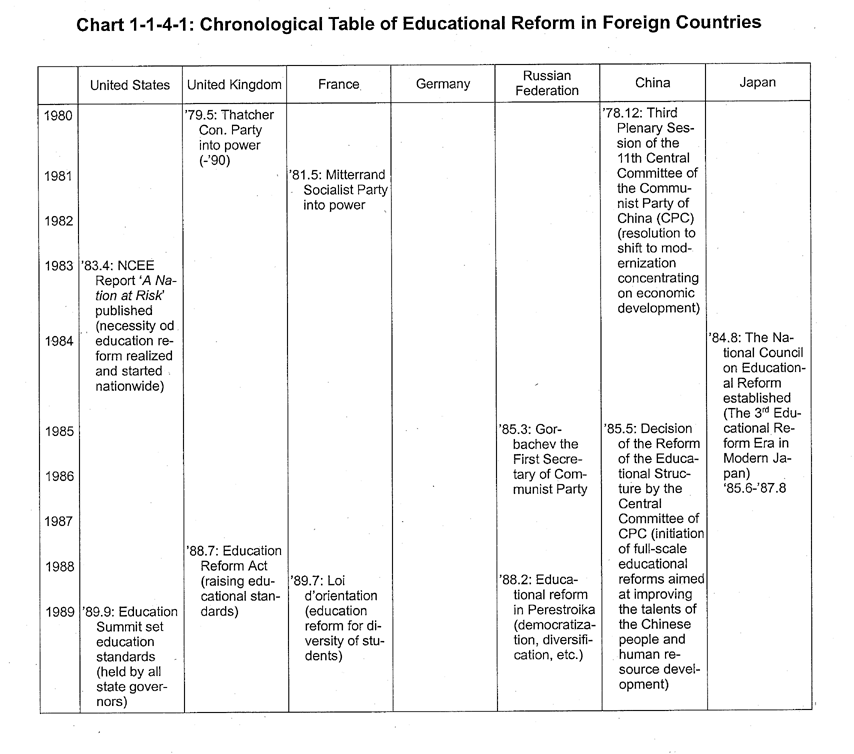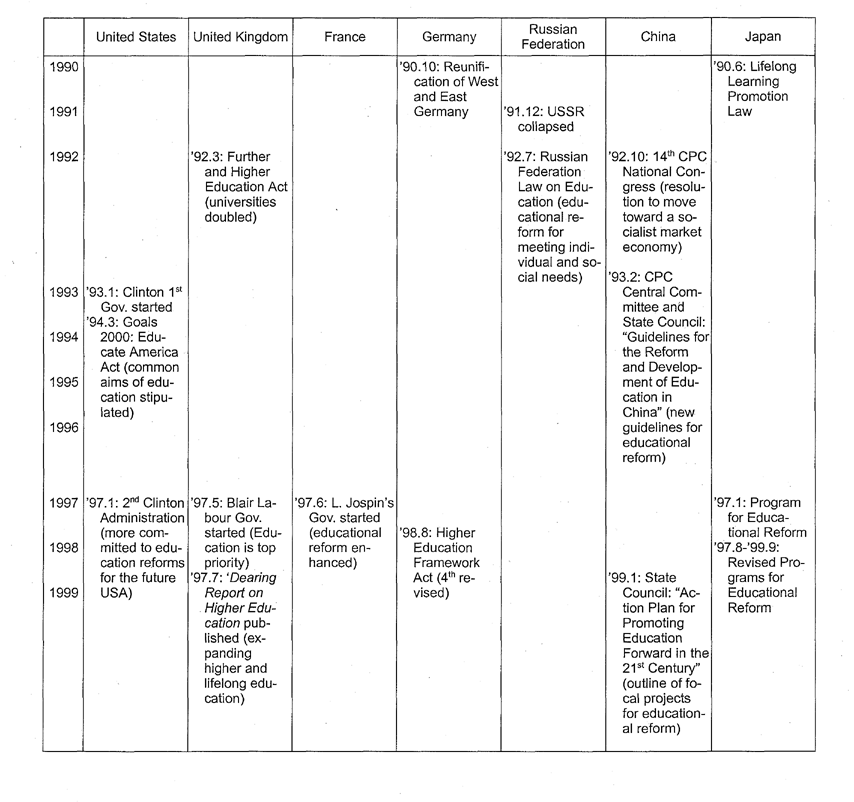| Home > Policy > White Paper, Notice, Announcement > White Paper > Japanese Government Policies in Education, Science, Sports and Culture1999 > Part1 Chapter Global Trends in Educational Reform 2 | ||
In the1980's educational reform was taking place simultaneously in North American,Euro-pean and Asian countries,including Japan.Alt-hough the themes and content of educational reform reflected the individual concerns of each country,the development of such reform is not a trend by chance,but is one of the definite cur-rents in modern world history.In the United States of America,for example,in1983,a report entitled"A Nation at Risk:The Imperative for Educational Reform,"was pub-lished by the Federal Government and used to increase public awareness and build momentum for movements of educational reform throughout the country.In the United Kingdom,an educa-tional refonn policy by the conservative gov-ernment led by Prime Minister Thatcher was embodied in the Education Reform Act of1988.Under this Act various reform measures were put into effect.In France,in1989a new basic law of education named"Loid'sorientation"was enacted under President Mitterand.The law provided a foundation for subsequent education-al reforms.In Russia,educational reform plans were proposed under Perestroika,which began during the late1980's under Soviet government,to carry out social and economic reforms.
In Japan,in1984a National Council on Edu-cational Reform was created to deliberate oneducation reform which would be defined as thethird comprehensive education reform in Japansince its modernization in the Meiji era.In China,education reform was taken up after the Com-munist Party announced its Decision on the Re-form of the Educational Structure in1985.Theystarted with efforts to modemize with"reformand opening to the outside world"as importantpillars of its educational reform.And in the Re-public of Korea,the Presidential Commission onEducation Reform was set up in1985,and puttogether a plan of sweeping reforrns( Chart1-1-4-1 ).These reform initiatives are ongoing today,each progressing while meeting new challenges.


These reform movements are still under way,motivated in many cases by the reality of rapid social and economic changes on a global scale.The first element of such rapid social and economic change is the intensified international competition in the field of economy in the post Cold War era.While economic activity across national boundaries has grown more intense,many countries have experienced cyclical economic recessions and growth in unemploy-ment.It has been recognized that,in order to maintain a favorable position in this era of in-creased economic competition,the-develop-ment of a trained,high-quality workforce with the skills to support the scientific,technological and economic activities of the nation is critical.This fact became a common motivating force behind promoting educational reform in many countries.The second element is a series of diverse changes taking place in our society,including the evolution of science and technology,the spread of information media and the trend to-ward internationalization in various sectors of society.I-n Europe,"European I-ntegration"has had had a great impact on all countries,requiring each country to develop methods for dealing with integration in the education sector.All countries are now confronted with the problems of how to refresh our knowledge and skills when our lives,social systems,industrial structures,etc.are changing more rapidly than ever,and how we should live in the face of such rapid changes.After World War II many countries made efforts to achieve the quantitative expansion of education with the aim of guaranteeing"equal opportunity in education"for all.On achieving this aim,many countries have shifted their con-cern to the quality of education for the future,so much so that this has become a common trend.What should be the nature of the education system?What manner of structure and content are needed to meet the demands for educational reform?The answer varies among different countries with different historical backgrounds of education and social and economic environ-ments.Whatever path is taken,the efforts to meet new demands for educational reform will be designed to help guarantee the prosperity of each nation and the life of the people.
| Back to Top | MEXT HOME |